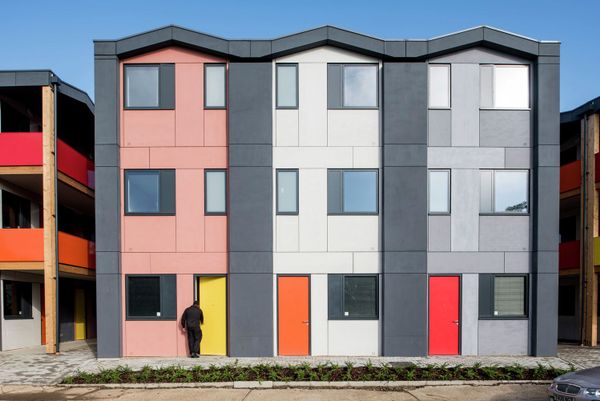Last Updated on: 22nd November 2023, 02:19 am
Leading lettings management platform, Howsy, has looked at where across the UK is home to the lowest level of rental stock to meet tenant demand.
Howsy looked at all property listings across the major portals and then looked at what percentage of these was accounted for by rental properties as opposed to properties for sale, to see where was most in need of more buy-to-let landlords.
The data shows that across the UK’s major cities an average of just 33.2% of all stock listed is to let rather than buy, while across London’s boroughs this increases to 37.1%.
The worst served city for rental stock is Newport in Wales where just 13.5% of properties listed are to rent, with Bristol the second lowest and lowest in England at 15.8%, closely followed by Glasgow at 16.4% as the lowest in Scotland.
Belfast ranks as the city with the fourth lowest level of rental stock at 16.8%, with Plymouth completing the top five at just 24.9%.
When it comes to an abundance of rental stock, Aberdeen tops the table with 62.2% of all properties listed on the portals for rent. Newcastle ranks second with 53.5% followed by Oxford (47.3%), London (42.1%) and Southampton (41.2%).
Looking at the capital on a borough level, Bexley ranks as the worst area for rental stock availability with just 15.2% of property listed on the portals available for tenants, not homebuyers.
Havering (16.4%), Bromley (18.7%), Sutton (21.4%) and Croydon (23.7%) also rank amongst the lowest, while Westminster is home to the highest at 62%.
Founder and CEO of Howsy, Calum Brannan, commented:
“This data not only suggests where tenants might struggle to find a place to rent due to an imbalance of rental to sale stock but perhaps also where has seen the largest exodus of buy-to-let landlords due to recent changes in legislation with lettings stock dwindling while the amount of property for sale increases.
It makes sense that in cities dominated by industry, such as Aberdeen or Newcastle, and in those with the least affordable price tags, such as London and Oxford, there is a higher tendency to rent and therefore more rental properties as a proportion of all homes listed.
However, it also highlights that in areas such as Newport, Bristol and Glasgow where rental stock is very low, there is a real opportunity for the professional buy-to-let landlord due to a higher level of tenant demand with a lower investment cost.
Whichever way you look at it, we’re seeing a shift in lifestyle trends towards a greater acceptance of renting on a longer-term basis with the scramble to own our own homes taking a back seat, and so it’s important that the level of rental stock available is cultivated to meet demand across the UK.”
|
Rental stock (% of properties)
|
|
|
City
|
Rental stock (%)
|
|
Aberdeen
|
62.2%
|
|
Newcastle
|
53.5%
|
|
Oxford
|
47.3%
|
|
London
|
42.1%
|
|
Southampton
|
41.2%
|
|
Leeds
|
40.2%
|
|
Swansea
|
39.7%
|
|
Cardiff
|
37.7%
|
|
Manchester
|
37.6%
|
|
Birmingham
|
37.1%
|
|
Cambridge
|
36.8%
|
|
Sheffield
|
32.2%
|
|
Leicester
|
31.9%
|
|
Bournemouth
|
30.9%
|
|
Edinburgh
|
27.6%
|
|
Nottingham
|
26.9%
|
|
Liverpool
|
26.7%
|
|
Portsmouth
|
25.5%
|
|
Plymouth
|
24.9%
|
|
Belfast
|
16.8%
|
|
Glasgow
|
16.4%
|
|
Bristol
|
15.8%
|
|
Newport
|
13.5%
|
|
Average
|
33.2%
|
|
Rental stock (% of properties)
|
|
|
Location / borough
|
Rental stock (%)
|
|
Westminster
|
62.0%
|
|
Kensington and Chelsea
|
61.7%
|
|
Camden
|
59.5%
|
|
Hammersmith and Fulham
|
51.5%
|
|
City of London
|
50.2%
|
|
Islington
|
49.9%
|
|
Tower Hamlets
|
47.0%
|
|
Brent
|
42.4%
|
|
Haringey
|
40.9%
|
|
Southwark
|
40.2%
|
|
Barnet
|
40.0%
|
|
Wandsworth
|
39.6%
|
|
Hackney
|
39.6%
|
|
Ealing
|
38.7%
|
|
Lambeth
|
37.4%
|
|
Newham
|
37.1%
|
|
Merton
|
36.3%
|
|
Hounslow
|
36.0%
|
|
Harrow
|
35.6%
|
|
Redbridge
|
35.1%
|
|
Richmond upon Thames
|
34.3%
|
|
Greenwich
|
34.1%
|
|
Enfield
|
32.0%
|
|
Barking and Dagenham
|
30.6%
|
|
Lewisham
|
30.2%
|
|
Kingston upon Thames
|
29.7%
|
|
Waltham Forest
|
28.6%
|
|
Hillingdon
|
27.5%
|
|
Croydon
|
23.7%
|
|
Sutton
|
21.4%
|
|
Bromley
|
18.7%
|
|
Havering
|
16.4%
|
|
Bexley
|
15.2%
|
|
Average
|
37.1%
|
|
Inner London
|
46.2%
|
|
Outer London
|
30.3%
|









